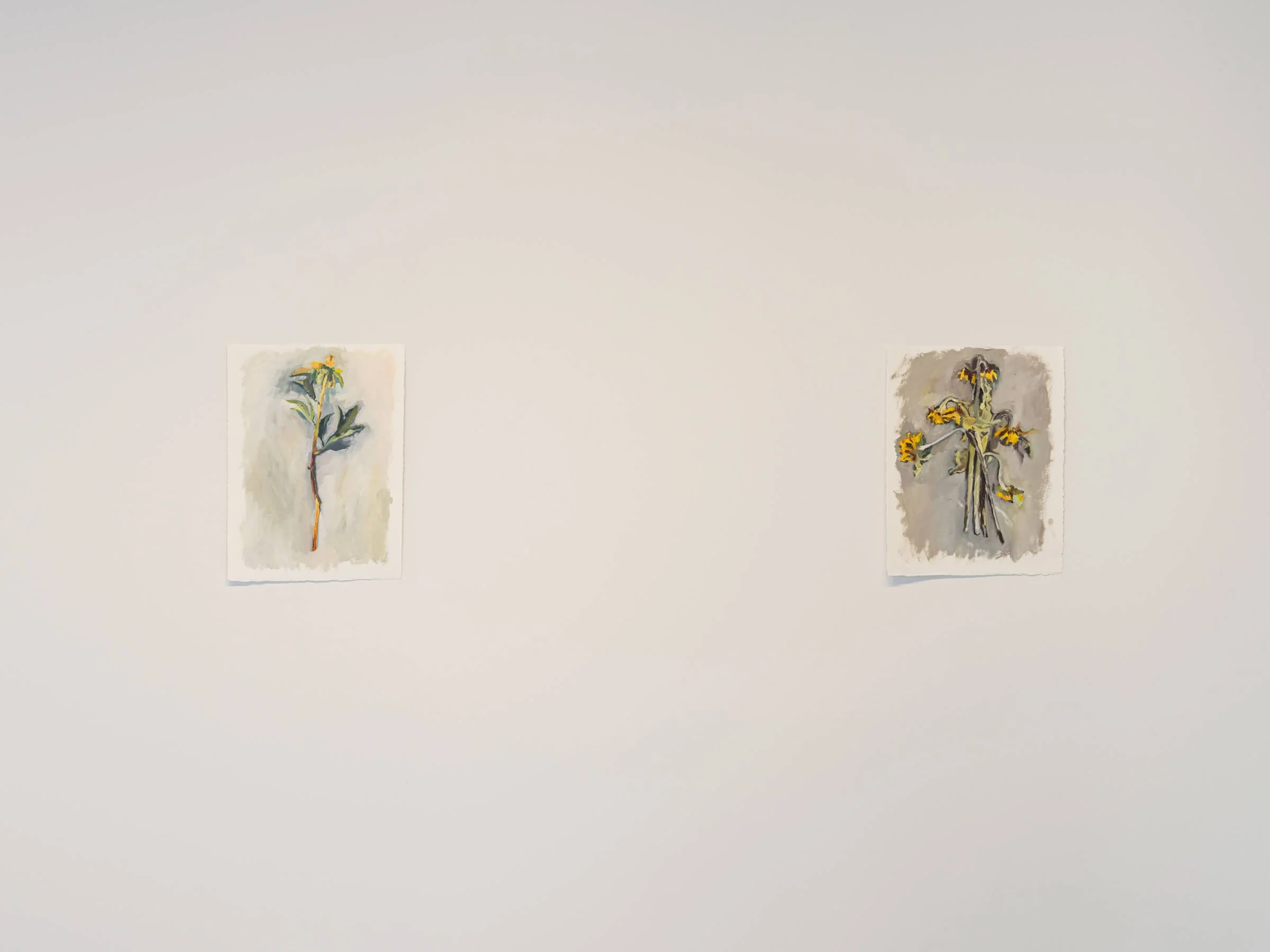Hank Ehrenfried
Index
November 9–December 22, 2024
Opening reception Saturday, November 9, 2024, 3–5 PM
“Here I was, face to face with a nameless painter reaching from the dark to show me what he could do, saying to me as clear as any words, ‘If any part of me survives from time’s corruption, let it be this. For this was the sort of man I was.’”
—J.L. Carr, A Month in the Country
These paintings began with a collage I found in my childhood home that I made when I was eight years old. It is supposed to show a camel walking alone in a desert. (It appears, rotated 90 degrees counterclockwise, in “Turned Camel Collage.”) I remember cutting up the magazine image of a glistening steak and thinking it would make a great stand-in for the camel’s fur. The sky is primarily made of images of the ocean. A cut-up picture of a potato and a photo reproduction of a cave painting comprise the desert floor.
Several years ago I began making collages again, painting them from life as trompe l’oeil. At the time, it nagged at me that this impulse seemed very unlike me, and I worried that my sudden interest in collage was somehow forced or dishonest. I had always been a drawer, filling sketchbooks almost compulsively, so where did the cutting and pasting and hoarding of pictures and books begin? Finding this collage was a reassurance. I am, somehow, still the person I have always been.
My collages are assembled from disparate sources whose primary connector is that they live with me in the studio: rudimentary how-to guides for drawing manga, a book on Poussin, Etruscan pottery and sculptural objects, the color guide for Old Holland oil paints, porcelain from the collection of a small Connecticut museum, Bruce of Los Angeles photographs taken from an archive that lives on Google Drive. These things get shuffled together, cut apart, and folded up. Information on the front of an image is exchanged for the information on its back. Once the assemblage is satisfactory (never for any narrative reason) it is nailed to the studio wall and painted from life. All the physical manipulation of the paper becomes flattened into an illusion, and what information might be implied by a fold or shadow is lost.
An index points. The word is related closely to “indicate,” a term which perhaps better explains the name of the digit—the index finger is the indicator, the pointer. An index gives direction but no definition. It is information without the information. A container that refers elsewhere toward what it explicitly does not hold. It is organized dislocation, a record of the extent to which terms, things, and dates are scattered. An index’s order is an archival farce as an arrangement almost completely removed from the actual order of what it contains. It is a system that is incoherent to the source it scrambles. In an index, you may find that a beefsteak and a camel live side-by-side.
Hank Ehrenfried, Kettle and Kitty, 2024, oil on linen, 15 x 12 inches
Hank Ehrenfried
“My process begins with the assemblage of collages made from old auction catalogs, gay erotica, instructional guides, museum catalogs, and other assorted imagery. Materials are cut, folded and stuck back together repeatedly to make haphazard compositions that force histories and images together unexpectedly. These collages are then affixed to the walls of his studio and painted from life as trompe l’oeil. My approach is not photorealistic. Imagery goes in and out of focus. My loyalty is not to exactly how it was but to the affective and the procedure of observation. The paintings themselves do not confess to ownership of this imagery and their origins, only the plain observation of their time stuck to the studio wall.
This process of presentation and concealing is a critical component of how the erotic operates for me, and is an important means for me to point at queerness while holding it at a distance. The paradox of pictorial excess and the inevitable violence as loss through an archival act is central to my process. Folds in the collage pull information out of view, simultaneously present and erased in the translation from paper to paint. Pin and screw holes in the studio wall rupture the actual studio wall and the seemingly flat surface of the painting. Decay through time is inevitable but what remains points one hand towards history and another towards the predictable and unknowable nature of what follows. Despite the random and abject the violence of our times, something does come next.”
Hank Ehrenfried, Three Legged Archer, 2024, oil on linen, 20 x 16 inches
Hank Ehrenfried (b. 1992, New Jersey) is a painter and currently resides in Oklahoma City. He holds a BFA in Fine Art from Carnegie Mellon University (2014) and a MFA in Painting from Pratt Institute (2019). He has exhibited nationally and internationally with solo exhibitions at Vardan Gallery (Los Angeles, CA) AuxierKline (New York, NY), Quappi Projects (Louisville, KY) and Welcome Gallery (Charlottesville, VA), as well as group exhibitions at Fierman (New York, NY), Fredericks & Freiser Gallery (New York, NY), Semiose Galerie (Paris, FR), and Turley Gallery (Hudson, NY), among others. Ehrenfried has completed residencies at The Macedonia Institute in Chatham, NY, and Trestle Art Space in Brooklyn, NY. His work has been written about in publications such as Whitewall Magazine and Two Coats of Paint and has been featured in New American Paintings. He is currently an artist in residence at ARTSPACE at Untitled in Oklahoma City.
Installation photography by Spencer House Studio












